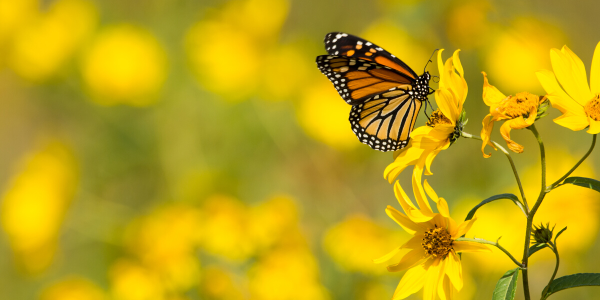Everyone delights in observing these graceful creatures take flight. With their vivid hues and seemingly choreographed movements, butterflies captivate us all. While you might consider yourself knowledgeable about butterflies, these 10 facts will provide a fresh perspective and deepen your appreciation for these insects.
Butterfly Wings Are Transparent
Before you rush to book an eye check-up, let us clarify. Butterfly wings are adorned with countless tiny scales – thousands of them, to be precise. These scales refract light to produce the vibrant colors you see when a butterfly glides by. The wings consist of chitin, a protein also found in an insect’s exoskeleton. Similar to an exoskeleton, chitin is transparent. So, there’s a fascinating new fact for you!
There Are Almost 20,000 Butterfly Species
If you’ve ever thought about memorizing all butterfly species, it’s quite a task. A more manageable approach would be to start with those commonly found in the contiguous United States, which number approximately 575 species. Note cards could be helpful, or simply focusing on the butterflies you encounter in your yard during spring and summer would be a good start.
Butterflies Use Their Feet to Taste
If you’ve already absorbed everything about butterflies up to now, this fact might surprise you. But from a butterfly’s perspective, it’s quite logical. Butterflies spend their days eating and mating, activities that necessitate landing, even if only briefly. Their taste receptors assist in finding the correct plants and essential nutrients for survival. While people often ponder the meaning of a butterfly landing on them, the reality is likely simple: the butterfly is probably just seeking nourishment.
Butterflies Only Live for a Few Weeks
For those eagerly anticipating this information or those who skipped ahead to find it, here it is: The typical lifespan of an adult butterfly is about three to four weeks, but the complete life cycle can range from two to eight months. There are exceptions, of course. Certain species live for only about 24 hours, while migratory butterflies such as the North American Monarch can survive for nearly eight months.
The Most Common Butterfly in the US is the Cabbage White
Some Butterfly Species Migrate from the Cold
While cold weather often ends the already brief lifespan of butterflies by making them immobile, some species take dropping temperatures as a cue to migrate. Butterflies are cold-blooded and typically need a body temperature around 85 degrees Fahrenheit to activate their flight muscles under ideal conditions. When weather patterns shift, certain species migrate in search of warmer climates and sunlight. For instance, the North American Monarch butterfly travels an average of 2,500 miles during migration.
One of the Largest Butterflies is the Giant Swallowtail Butterfly
Spanning between four and seven inches across its wings, this species aptly earns its name from its size. If you’ve encountered one during a hike or in your yard, you’ve likely been captivated by its appearance. The ‘swallowtail’ moniker comes from the elongated tails on its hindwings, borrowing the name from birds that share a similar feature.
Butterflies Have a Liquid Diet
Earlier, we noted that butterflies enjoy eating, which is accurate. What we didn’t mention then is that their primary food source is liquid. Butterflies lack the physical structures required for chewing. Instead, they use their proboscis, akin to how we might use a straw, to consume liquids such as nectar or other forms of liquid sustenance.
Butterfly Wings Help Them Against Predators
As we’ve covered, butterflies have a short lifespan and are remarkably delicate even at their peak. Maximizing their lifespan provides more chances to mate, crucial for sustaining their species. Therefore, butterflies often rely on their wings as a defense strategy. They might fold their wings to camouflage with their surroundings, or display a spectrum of vivid colors and patterns to deter predators. In this way, a butterfly’s wings serve as their primary means of protection.
Butterflies Have Four Wings, Not Two
Speaking of wings, we’ve saved perhaps the most fascinating butterfly fact for last! Despite their appearance in motion or in artistic depictions, butterflies actually have four distinct wings. The front pair are known as the forewings, while the rear pair are the hindwings. Powered by strong muscles in the butterfly’s thorax, all four wings move in a figure-eight pattern during flight.







